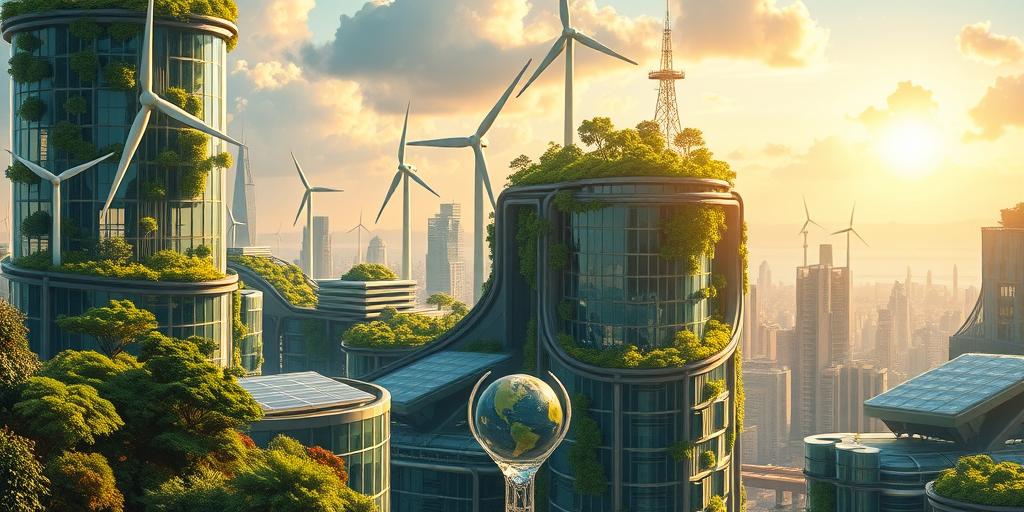Are green technologies truly sustainable, or is it all just clever marketing? That’s the billion-dollar question many are asking as the world grapples with climate change. The allure of eco-friendly solutions is undeniable – sleek electric vehicles, solar-powered homes, and promises of a carbon-neutral future. But beneath the surface of this dazzling green veneer lies a complex reality often obscured by marketing hype. This in-depth exploration will delve into the sustainability of green technologies, examining both their potential and limitations, separating fact from fiction, and empowering you to make informed choices in a world increasingly focused on environmental responsibility.
The Allure of Green Technology: A Closer Look
The appeal of green technologies is multifaceted. The global race toward sustainability has given rise to innovations aimed at reducing our environmental footprint, and these technologies often boast significant advantages. From energy efficiency to reduced emissions, the potential benefits are substantial. But are these benefits always as significant as advertised? Some green technologies, like electric vehicles, require substantial resources for manufacturing, raising questions about their overall environmental impact over their lifecycle. Furthermore, the effectiveness of various technologies can greatly depend on factors such as the specific technology used, the geographical location, the manufacturing processes, and the entire supply chain involved.
Greenwashing: The Dark Side of Sustainability
Unfortunately, the push for green technologies has also led to a surge in ‘greenwashing’. Companies often leverage environmental concerns to boost their image and sales, but their actual environmental contribution is minimal or even harmful. Understanding the difference between true sustainability and clever marketing is crucial. Look out for vague or unsubstantiated claims. Genuine sustainability initiatives are often backed by independent certifications and rigorous data. Don’t fall prey to buzzwords; examine the evidence carefully. The ‘green’ label shouldn’t be the sole determinant of your purchasing decisions.
Life Cycle Assessments: A Deeper Dive into Sustainability
One critical aspect that needs to be examined is the entire lifecycle of green technologies. Lifecycle assessments (LCAs) provide a comprehensive view, encompassing everything from resource extraction and manufacturing to usage and disposal. Many green technologies that appear beneficial at first glance reveal surprising negative consequences when their full life cycle is considered. This holistic perspective allows for a more accurate evaluation of the actual sustainability of these technologies, rather than being swayed by initial promises. For example, while solar panels produce clean energy, their production involves the use of various rare earth elements that carry their own environmental burdens.
Assessing the True Sustainability of Green Technologies
The sustainability of green technologies is not a binary – it’s a spectrum. Certain technologies stand out as truly sustainable, offering genuine environmental benefits. Others fall short, revealing that their contributions are far less impactful than their marketing suggests. It is critical to acknowledge that the ‘best’ technology is often context-dependent. What works in one location or situation may prove inefficient or even damaging in another.
Factors to Consider: Location, Infrastructure, and Technological Advances
Several key factors influence a technology’s ultimate sustainability. Geographic location plays a significant role; for instance, solar power thrives in sunny regions but is less effective in areas with limited sunlight. The existing infrastructure can also be a constraint or an asset. A robust electricity grid is crucial for maximizing the benefits of electric vehicles and renewable energy sources. Finally, continued technological advancement is vital for improving the efficiency and reducing the environmental footprint of green technologies. Research and development in renewable energy and resource-efficient manufacturing are crucial for a truly sustainable future.
Beyond the Technology: Societal and Economic Impacts
Sustainability is not solely an environmental issue; it has significant societal and economic implications. The transition to green technologies needs to be socially equitable, avoiding displacement of workers or disproportionate burdens on certain communities. Furthermore, economic considerations are vital. The cost-effectiveness of green technologies must be carefully assessed to ensure their widespread adoption. A sustainable solution must be both environmentally and economically viable in the long term, without causing undue hardship or inequalities.
The Future of Green Technology: A Path to True Sustainability
The journey toward true sustainability is a marathon, not a sprint. It demands a holistic approach, encompassing technological innovation, responsible resource management, and thoughtful policy-making. While some green technologies fall short of their initial promises, they represent essential steps in the right direction. Continuous improvements in design, manufacturing, and waste management are crucial for optimizing their environmental performance. Ongoing research and development are pivotal for achieving breakthroughs that lead to genuinely sustainable solutions.
Transparency and Accountability: Key Elements for a Sustainable Future
To ensure real progress, we need greater transparency and accountability from companies and governments alike. Clear labeling, standardized metrics, and independent verification are essential for preventing greenwashing and promoting genuine sustainability. Consumers also have a crucial role to play. By making informed choices and demanding greater transparency, we can collectively push for a future where green technologies truly deliver on their promise of a healthier planet for generations to come. Supporting businesses committed to sustainability, and actively reducing our own environmental impact, are vital steps on this path.
Embrace the future of sustainable innovation. Start making eco-friendly choices today! Invest in yourself and the planet by learning more about truly green technologies. Make a difference!




